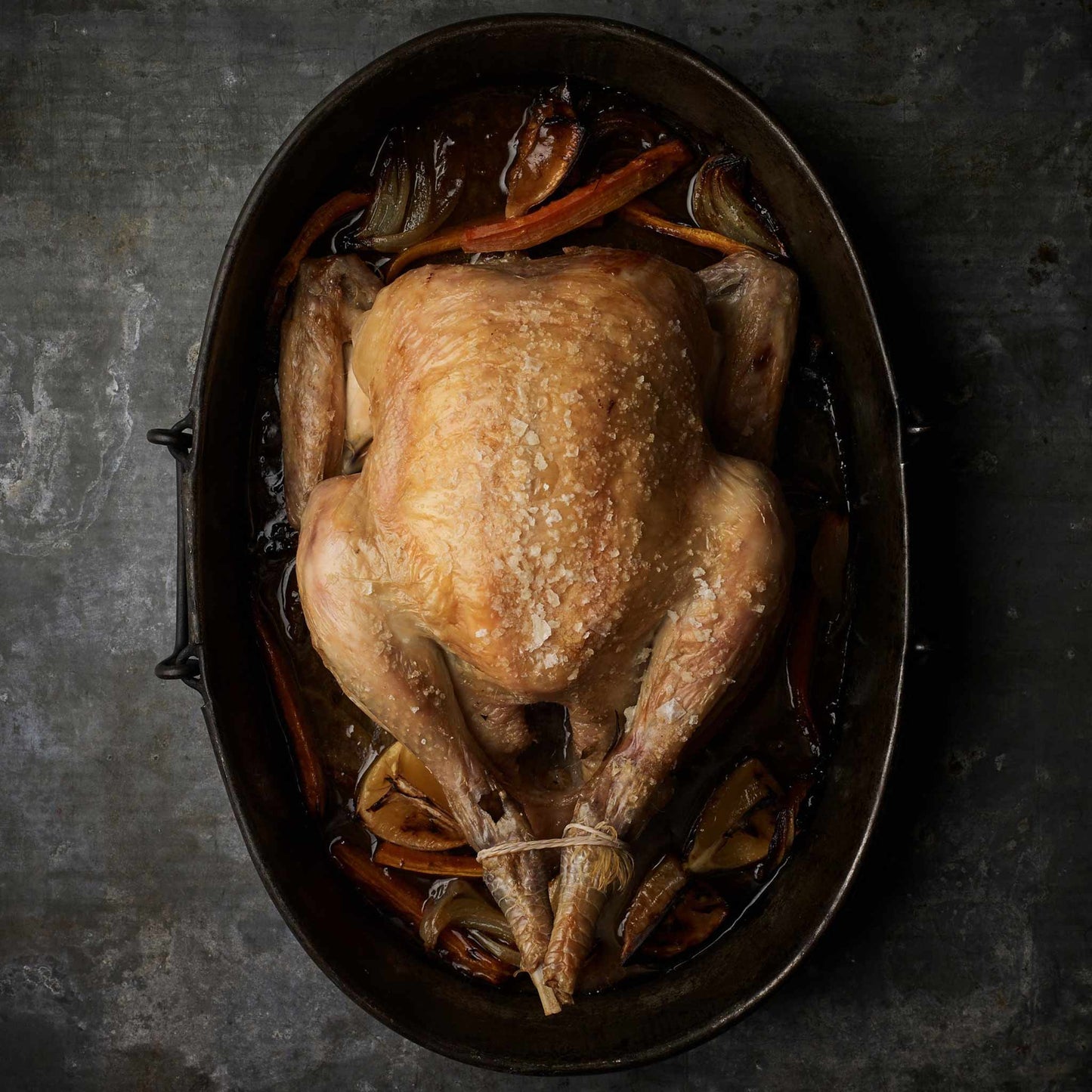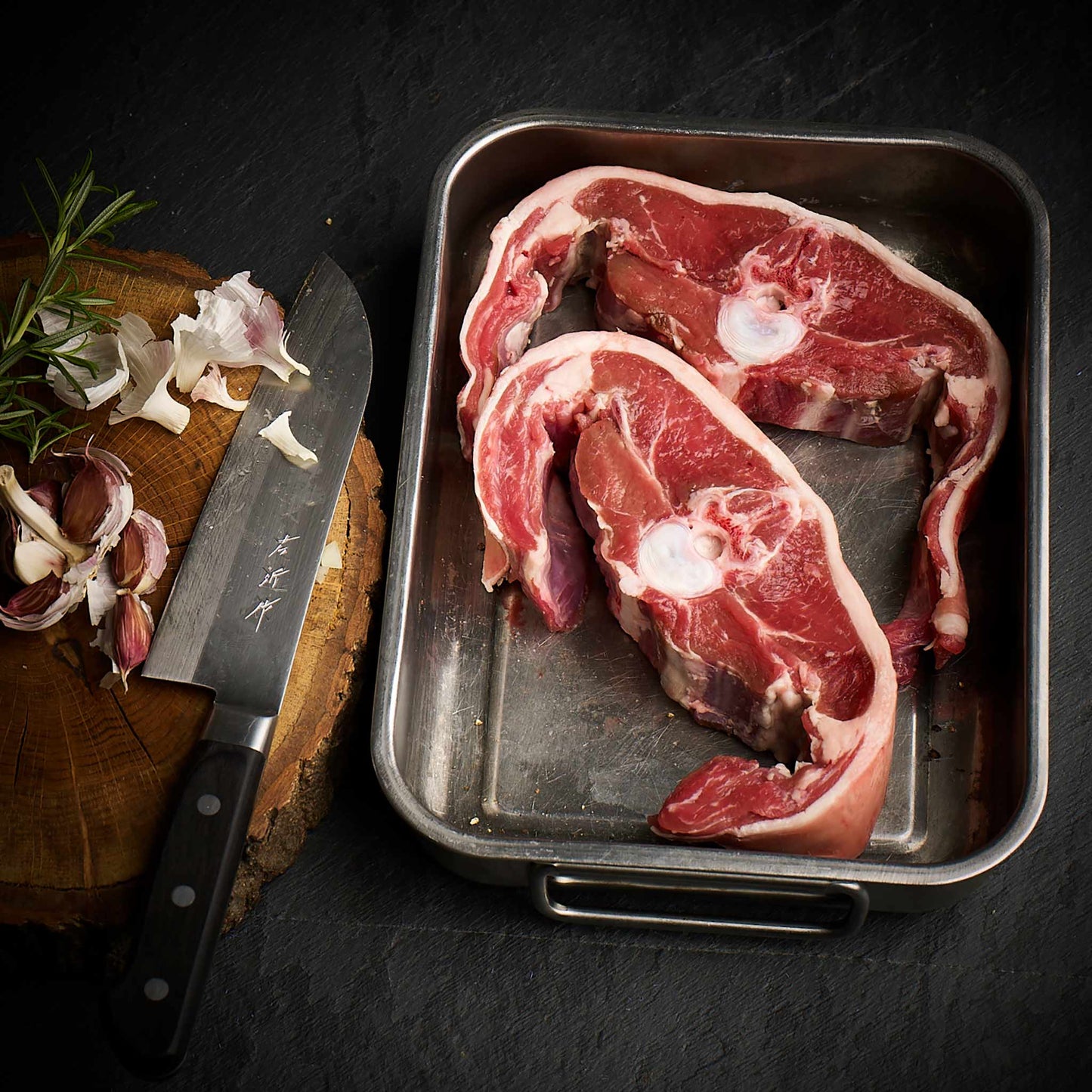We source our chicken from one farm in Leicestershire. The farm is Pasture for Life certified and rears truly free range, outdoor birds.

Last night on October the 1st was the Blood Moon full moon for those lucky enough have clear skies to see it,the moment of full illumination will occurred roughly at about 10.05pm BST, here in the UK.
Humans through the ages have always found autumn’s full moons to be somewhat creepy or foreboding, and not without good reason. There’s a reason why English folks in the Middle Ages called October’s full moon the Blood Moon, and it’s the exact same reason why even Halloween imagery today often features a large, low-hanging moon with an eerie reddish glow. The Hunter’s Moon rises early in the evening, which means that you are more likely to see it near the horizon. When you observe the moon while it’s near the horizon, it gives off the illusion of being bigger while it’s in fact the same size. In addition, observing the moon at the horizon makes it look redder. This is because you’re seeing it through a thicker atmosphere, which scatters more blue light and lets more red light pass through to reach your eyes, this why it earned the name 'blood moon'
Scientific explanations aside, the Hunter’s Moon or Blood Moon still holds an undeniable aura of mystique and power. As October’s full moon occurs right before Samhain, the Gaelic mid-autumn festival that has evolved into Halloween today, Neo Pagans consider the month of the Blood Moon to be a special time denoting the change of seasons and a prime opportunity to contact dead loved ones, given the thinning of the veil between the physical world and the spiritual world. Precious stones such as amethyst are used to ward off evil, and sacred flowers like chrysanthemum are used when working with spirits, such as in rituals to commune with long-dead ancestors.
This year October’s full moon even happens early enough in the month that it also can be called the Harvest Moon, which is defined as the full moon that’s closest to the fall equinox. In Chinese culture, the Harvest Moon is celebrated during the Mid-Autumn Festival, where people gather to celebrate by eating mooncakes. There is also a harvest festival in India that celebrates October’s full moon, called Sharad Purnima. Devotees fast all day before offering delicacies to the Moon God under the moonlight.
In contrast to the day-long fast of India’s moonlight festival, the Hunter’s Moon was a very important feast day in Europe as well as for many Native American tribes. Appropriately, the Ponca tribe’s name for the Hunter’s Moon is “the moon when they store food in caches”. Taking advantage of the fact that the fields have been reaped, hunters would capture foxes and other small animals who come out to graze on the fallen grains, as well as hunt down deer in the moonlight. They would butcher their prey and preserve their meat. Blood Moon is an excellent name for this month’s full moon, given that it was a final, bloody harvesting of meat before the winter months.
Sadly, the tradition of feasting during the Hunter’s Moon was lost around the year 1700, but its spirit still lives on in historical reenactments like the Feast of the Hunter’s Moon, or even the feast of candy enjoyed by trick-or-treaters everywhere on Halloween.
This time also had huge significance to the ancient Greeks. The days between September 29th and October 1st were Thesmophoria, a religious festival dedicated to Demeter, the goddess of harvest and fertility, and her daughter Persephone. It was celebrated probably as early as the 11th century, even before the Ionian migration into Greece. It was a fertility festival to ensure fertile land and good harvest.
During the Thesmophoria pigs were sacrificed, and their remains were put into pits called megara. An inscription from Delos shows that part of the cost of the Thesmophoria there went towards paying for a ritual butcher to perform the sacrifices for the festival; literary evidence suggests that in other places, however, the sacrifices may have been made by the women themselves. Some time later, the rotten remains of these sacrifices were retrieved from the pits by "bailers" – women who were required to spend three days in a state of ritual purity before descending into the megara. These were placed on altars to Persephone and Demeter, along with cakes baked in the shape of snakes and phalluses. These remains were then scattered on fields when seeds were sown, in the belief that this would ensure a good harvest.
This is the time of year for hunting and gathering, stocking up on provisions, and making plans for the coming winter. The dark and cold nights are a reminder that for our ancestors, this was a time to consider mortality - those who failed to plan accordingly in late fall could freeze or starve to death before winter ended.
Set aside a few hours to can your garden vegetables, hang the last of your herbs to dry someplace indoors, and begin figuring out what sorts of things you can do over the winter to help keep yourself warm and well fed, and consider what our ancestors experienced at this time.



